Large Mahogany 18th-Century Dial Clock, William Nicoll, London
1780 England
Sold
Request Information
Follow Us
Large Mahogany 18th-Century Dial Clock, William Nicoll, London
The solid mahogany case has a moulded mahogany glazed door, which can be locked on the
The silvered brass dial is attached to the case by two spigots, which pass through holes in the outer rim of the case, which are secured at the back by steady pins. It is signed by the maker in the following manner:
Willm Nicoll London.
The time is indicated by a fine pair of period pierced blued-steel hands on a black Roman chapter ring with Arabic five minute and minute divisions.
The spring-driven, eight-day movement has a going train with fusee, verge escapement and short pendulum.
Features
• Moulded mahogany glazed door
• Viewing doors to the side and bottom
• Large silvered dial
• Signed to the dial Willm Nicoll London
Signed/Inscribed
Willm Nicoll London
Condition
Provenance
Private collection Thame Oxfordshire
Literature
There are several makers of this name recorded, but it is most likely that this is William Nicoll(s) who was established in Great Portland Street around 1795 and also made barometers.
Brian Loomes, ‘Watchmakers and Clockmakers of the World, London’, 2006, p. 572
Dimensions
PREVIOUSLY SOLD
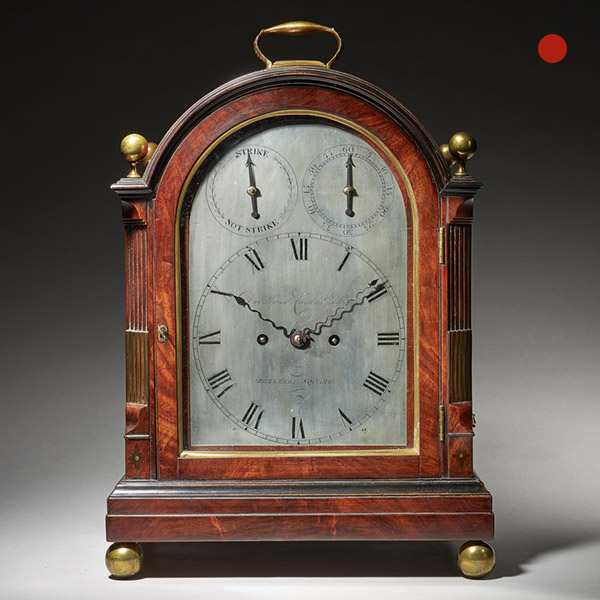
Fine George III Eight-Day Striking Mahogany Bracket Clock with Trip Repeat
Fine George III Eight-Day Striking Mahogany Bracket Clock with Trip Repeat SOLD Follow UsFine George III Eight-Day Striking Mahogany Bracket Clock with Trip Repeat A fine George III eight-day striking mahogany bracket clock with trip repeat...

Fine 17th Century Charles II Spring Driven Table Clock by Deodatus Threlkeld
Fine 17th Century Charles II Spring Driven Table Clock by Deodatus Threlkeld SOLD Follow UsFine 17th Century Charles II Spring Driven Table Clock by Deodatus Threlkeld The eminent maker Deodatus Threlkeld (1658-1732) was an apprentice of...

19th Century Gilt-Brass Engraved Striking and Repeating Carriage Clock
19th Century Gilt-Brass Engraved Striking and Repeating Carriage Clock Sold Follow Us19th Century Gilt-Brass Engraved Striking and Repeating Carriage Clock The superb engraved gilt brass gorge case has facetted glass panels to all sides so...
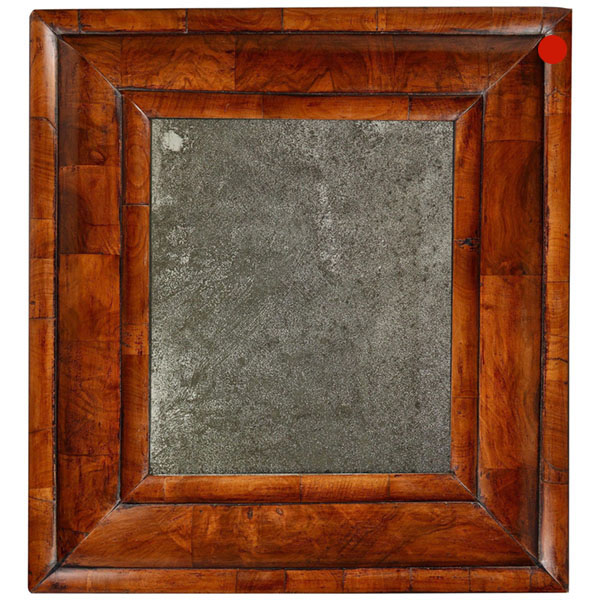
18th Century William and Mary Figured Walnut Cushion Mirror, circa 1690, England
18th Century William and Mary Figured Walnut Cushion Mirror, circa 1690, England Sold Follow Us18th Century William and Mary Figured Walnut Cushion Mirror, circa 1690, England A golden figured walnut cushion mirror from the reign of William...

Important Charles II 17th Century Princes Wood and Marquetry Longcase Clock
Important Charles II 17th Century Princes Wood and Marquetry Longcase Clock SOLD Follow UsImportant Charles II 17th Century Princes Wood and Marquetry Longcase Clock A unique and important Charles II 17th century month-going Princes wood and...

A Fine 18th Century Georgian Chippendale Giltwood Rococo Mirror Circa 1760
18th-Century Chippendale Giltwood Rococo Mirror. In full rococo form the free-flowing cartouche of acanthus leaves in the form of a love heart.

Fine George III Eight-Day Striking Mahogany Bracket Clock with Trip Repeat
Fine George III Eight-Day Striking Mahogany Bracket Clock with Trip Repeat SOLD Follow UsFine George III Eight-Day Striking Mahogany Bracket Clock with Trip Repeat A fine George III eight-day striking mahogany bracket clock with trip repeat...

Fine 17th Century Charles II Spring Driven Table Clock by Deodatus Threlkeld
Fine 17th Century Charles II Spring Driven Table Clock by Deodatus Threlkeld SOLD Follow UsFine 17th Century Charles II Spring Driven Table Clock by Deodatus Threlkeld The eminent maker Deodatus Threlkeld (1658-1732) was an apprentice of...

19th Century Gilt-Brass Engraved Striking and Repeating Carriage Clock
19th Century Gilt-Brass Engraved Striking and Repeating Carriage Clock Sold Follow Us19th Century Gilt-Brass Engraved Striking and Repeating Carriage Clock The superb engraved gilt brass gorge case has facetted glass panels to all sides so...

18th Century William and Mary Figured Walnut Cushion Mirror, circa 1690, England
18th Century William and Mary Figured Walnut Cushion Mirror, circa 1690, England Sold Follow Us18th Century William and Mary Figured Walnut Cushion Mirror, circa 1690, England A golden figured walnut cushion mirror from the reign of William...

Important Charles II 17th Century Princes Wood and Marquetry Longcase Clock
Important Charles II 17th Century Princes Wood and Marquetry Longcase Clock SOLD Follow UsImportant Charles II 17th Century Princes Wood and Marquetry Longcase Clock A unique and important Charles II 17th century month-going Princes wood and...

A Fine 18th Century Georgian Chippendale Giltwood Rococo Mirror Circa 1760
18th-Century Chippendale Giltwood Rococo Mirror. In full rococo form the free-flowing cartouche of acanthus leaves in the form of a love heart.
YOU MAY ALSO LIKE
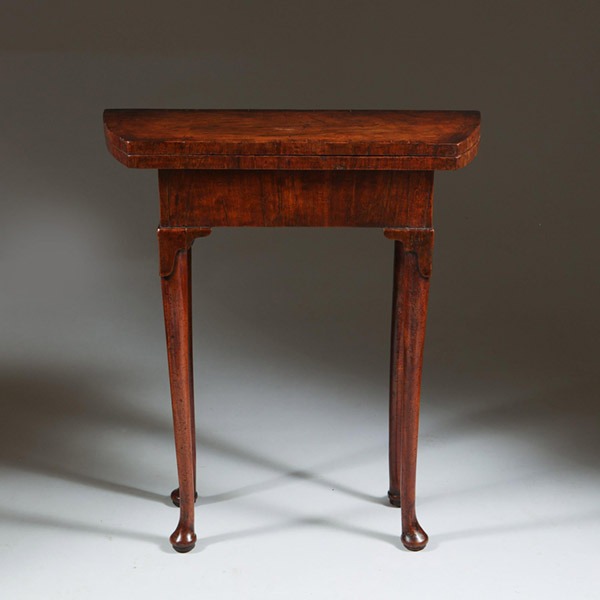
A Unique Early 18th Century Diminutive George I Figured Walnut Bachelors Table
A Unique Early 18th Century Diminutive George I Figured Walnut Bachelors Table £12,800Follow UsA...
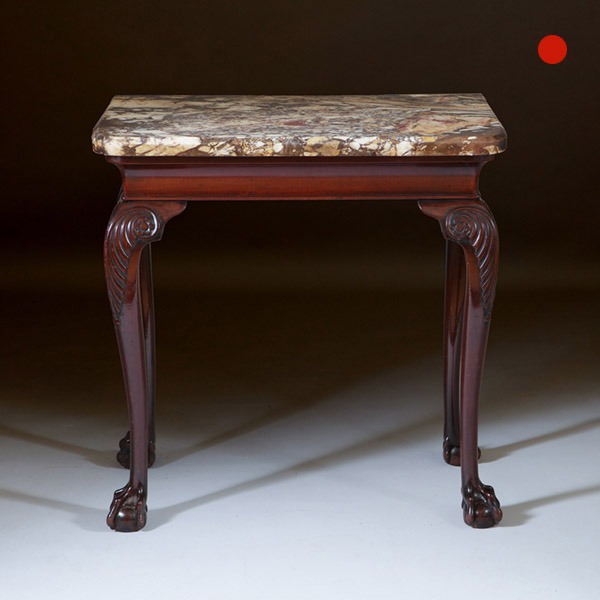
A Fine 18th Century George II Mahogany Marble Topped Console Table, Ireland
A Fine 18th Century George II Mahogany Marble Topped Console Table, Ireland SoldFollow UsA Fine...
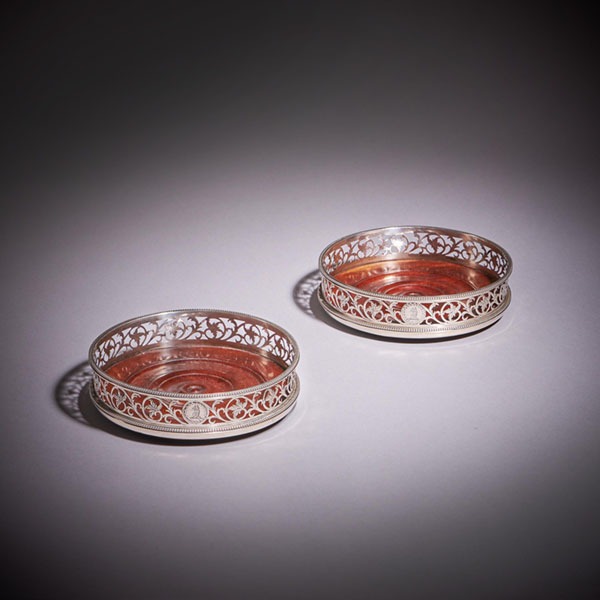
A Fine Pair of 18th Century George III Silver Engraved Open Fret Wine Coasters
A Fine Pair of 18th Century George III Silver Engraved Open Fret Wine Coasters £3,600Follow UsA...
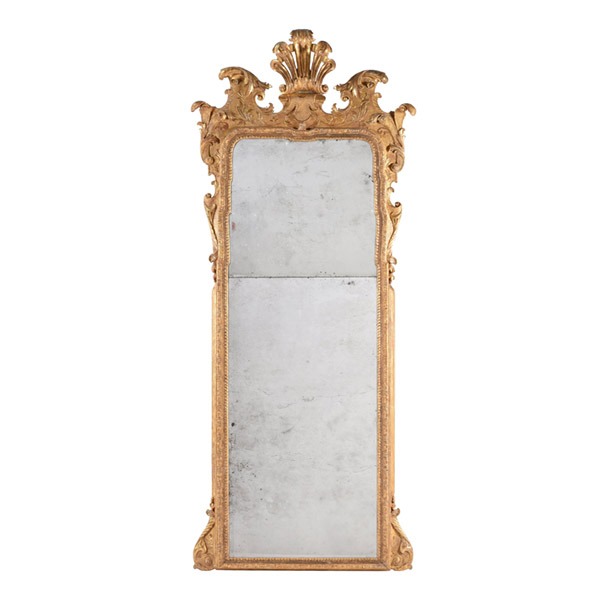
A Large 18th Century George I Gilt-Gesso Pier Glass, Attributed to John Belchier
A Large 18th Century George I Gilt-Gesso Pier Glass, Attributed to John Belchier £42,000Follow UsA...
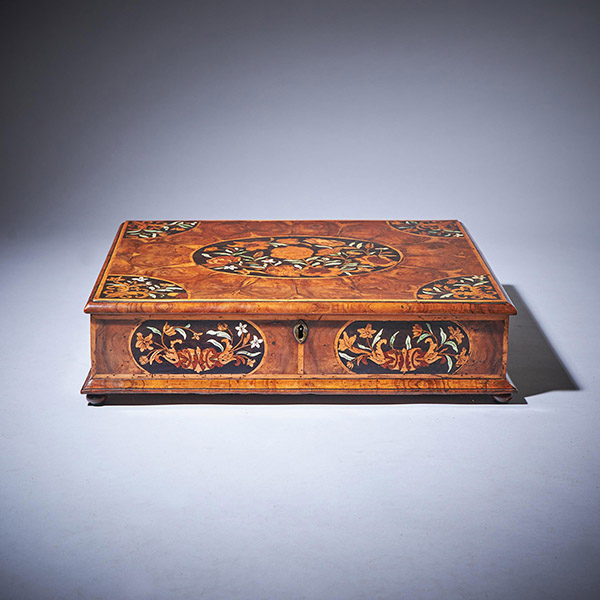
17th Century William and Mary Floral Marquetry Olive Oyster Lace Box, Circa 1685
17th Century William and Mary Floral Marquetry Olive Oyster Lace Box, Circa 1685 £16,000Follow...

A Fine 18th Century George II Figured Walnut Chest on Chest or Tallboy, 1740
A Fine 18th Century George II Figured Walnut Chest on Chest or Tallboy, 1740 £14,000[wpforms_selector form_id="11387" _builder_version="4.22.1" _module_preset="default" custom_margin="-30px||||false|false" hover_enabled="0"...

A Unique Early 18th Century Diminutive George I Figured Walnut Bachelors Table
A Unique Early 18th Century Diminutive George I Figured Walnut Bachelors Table £12,800Follow UsA...

A Fine 18th Century George II Mahogany Marble Topped Console Table, Ireland
A Fine 18th Century George II Mahogany Marble Topped Console Table, Ireland SoldFollow UsA Fine...

A Fine Pair of 18th Century George III Silver Engraved Open Fret Wine Coasters
A Fine Pair of 18th Century George III Silver Engraved Open Fret Wine Coasters £3,600Follow UsA...

A Large 18th Century George I Gilt-Gesso Pier Glass, Attributed to John Belchier
A Large 18th Century George I Gilt-Gesso Pier Glass, Attributed to John Belchier £42,000Follow UsA...

17th Century William and Mary Floral Marquetry Olive Oyster Lace Box, Circa 1685
17th Century William and Mary Floral Marquetry Olive Oyster Lace Box, Circa 1685 £16,000Follow...

A Fine 18th Century George II Figured Walnut Chest on Chest or Tallboy, 1740
A Fine 18th Century George II Figured Walnut Chest on Chest or Tallboy, 1740 £14,000[wpforms_selector form_id="11387" _builder_version="4.22.1" _module_preset="default" custom_margin="-30px||||false|false" hover_enabled="0"...



